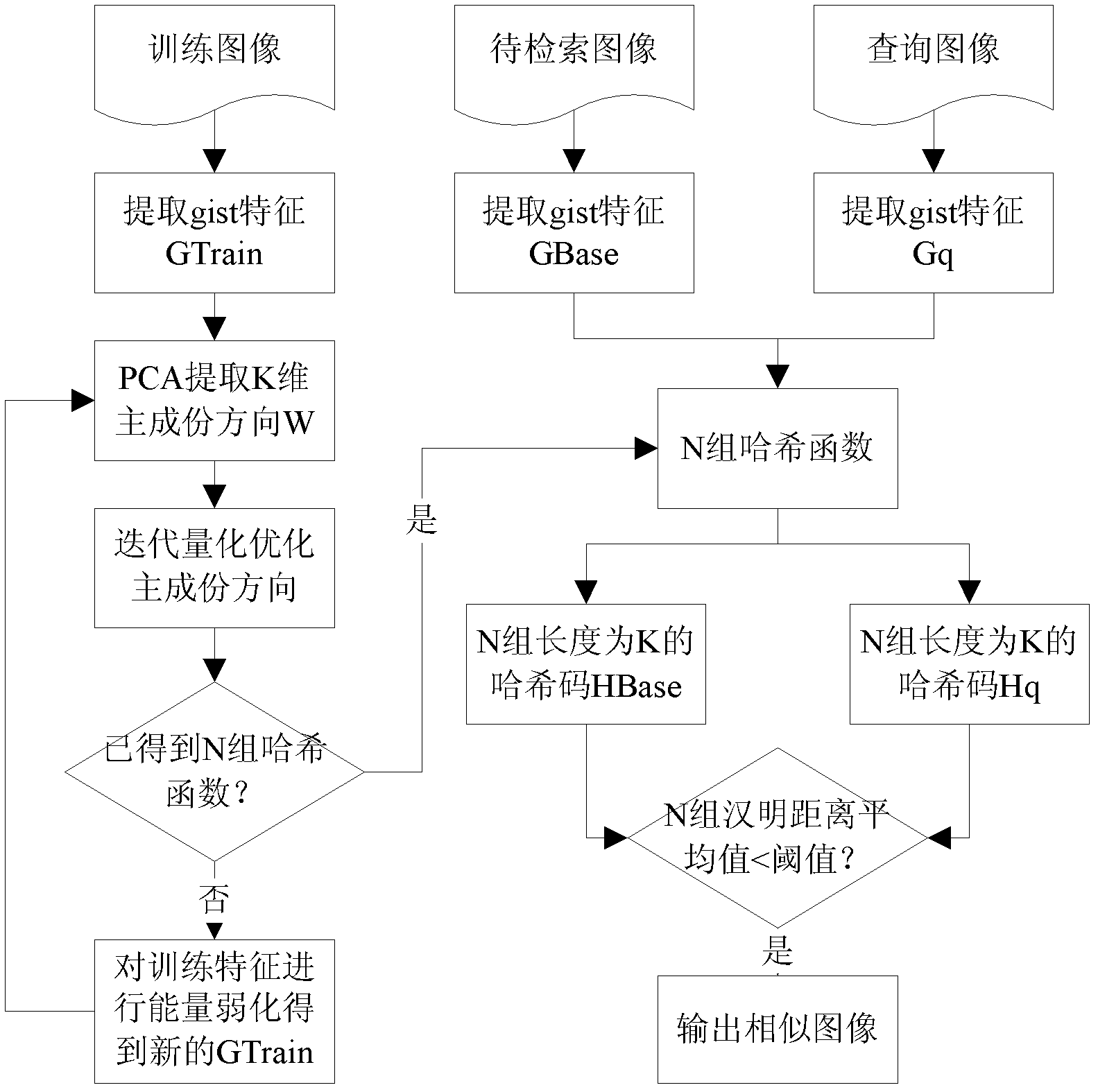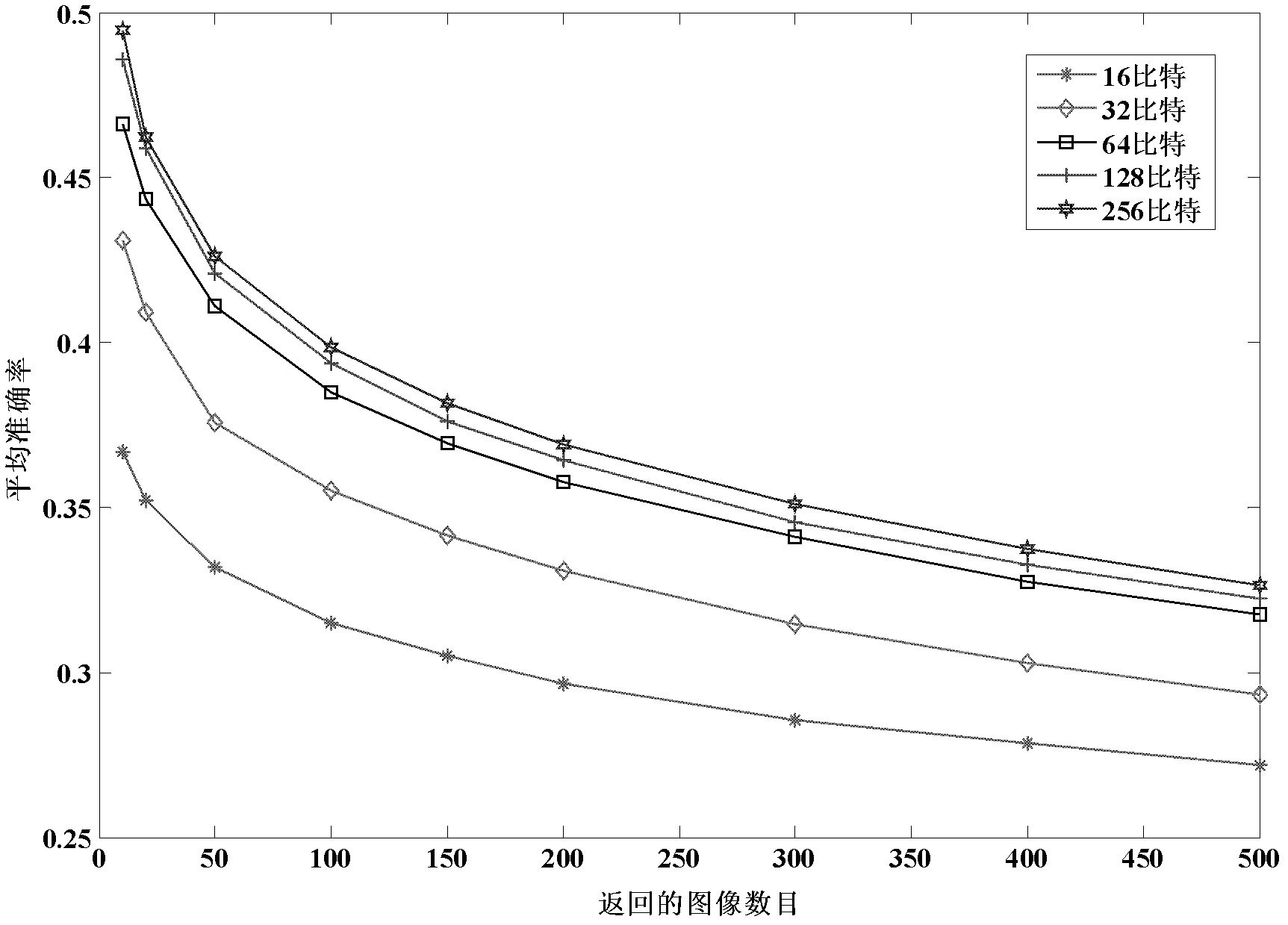Image retrieval method based on minimum projection errors of multiple hash tables
An image retrieval, multi-hash table technology, applied in special data processing applications, instruments, electrical digital data processing and other directions, can solve the problems of low accuracy, slow retrieval speed, large storage space of image feature library, etc. The effect of short, improved accuracy, and concise hashing
- Summary
- Abstract
- Description
- Claims
- Application Information
AI Technical Summary
Problems solved by technology
Method used
Image
Examples
Embodiment Construction
[0034] The specific embodiments of the present invention will be described in detail below in conjunction with the technical solutions and accompanying drawings.
[0035] Step 1. The image library contains 60,000 color images of 32×32 pixels, 10 categories in total, 6,000 images in each category, which come from the public CIFAR-10 image library. Take out 1000 images as test samples, and the other 59000 images as images to be retrieved. In addition, 8000 images are taken from the 59000 images to be retrieved as training samples. Some images such as figure 2 shown.
[0036] The URL of the image library is: http: / / www.cs.toronto.edu / ~kriz / cifar.html
[0037] Step 2. Convert all color images into grayscale images, and extract 320-dimensional gist features, which mainly describe the texture attributes of images. The feature library to be retrieved and the training feature library are respectively GI={GI 1 , GI 2 ,...,GI 59000}, GI∈R 59000×320 and GT={GT 1 , GT 2 ,..., G...
PUM
 Login to View More
Login to View More Abstract
Description
Claims
Application Information
 Login to View More
Login to View More - R&D
- Intellectual Property
- Life Sciences
- Materials
- Tech Scout
- Unparalleled Data Quality
- Higher Quality Content
- 60% Fewer Hallucinations
Browse by: Latest US Patents, China's latest patents, Technical Efficacy Thesaurus, Application Domain, Technology Topic, Popular Technical Reports.
© 2025 PatSnap. All rights reserved.Legal|Privacy policy|Modern Slavery Act Transparency Statement|Sitemap|About US| Contact US: help@patsnap.com



